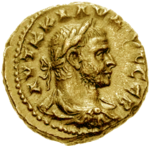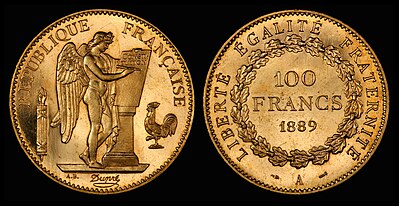Wikipedia:WikiProject Numismatics/newsletter/December 2019/compact

|
The WikiProject Numismatics newsletter |
|---|---|
| Issue IX | |
Read the full newsletter here
The Kalākaua coinage is a set of silver coins of the Kingdom of Hawaii dated 1883, authorized to boost Hawaiian pride by giving the kingdom its own money. They were designed by Charles E. Barber, Chief Engraver of the United States Bureau of the Mint, and were struck at the San Francisco Mint. The issued coins are a dime (ten-cent piece), quarter dollar, half dollar, and dollar.
No immediate action had been taken after the 1880 act authorizing coins, but King Kalākaua was interested and government officials saw a way to get out of a financial bind by getting coins issued in exchange for government bonds. Businessman Claus Spreckels was willing to make the arrangements with the United States in exchange for profits from the coin production, and contracted with the US Mint to have $1,000,000 worth of coins struck. Originally, a 121⁄2 cent piece was planned and a few specimens were struck, but it was scrapped in an effort to have uniformity between US and Hawaiian coins, and a dime was substituted. The coins were struck at San Francisco in 1883 and 1884, though all bear the earlier date.
The coins met a hostile reception from the business community in Honolulu, who feared inflation of the currency in a time of recession. After legal maneuvering, the government agreed to use over half of the coinage as backing for paper currency, and this continued until better economic times began in 1885. After that, the coins were more eagerly accepted in circulation. They remained in the flow of commerce on the islands until withdrawn in 1903, after Hawaii had become a US territory. (Full article...)
Today's Featured Article November 28
The Pilgrim Tercentenary half dollar was a commemorative fifty-cent coin struck by the United States Bureau of the Mint in 1920 and 1921 to mark the 300th anniversary of the arrival of the Pilgrims in North America. It was designed by Cyrus E. Dallin. Massachusetts congressman Joseph Walsh was involved in joint federal and state efforts to mark the anniversary. He saw a reference to a proposed Maine Centennial half dollar and realized that a coin could be issued for the Pilgrim anniversary in support of the observances at Plymouth, Massachusetts. The bill moved quickly through the legislative process and became the Act of May 12, 1920, with the signature of President Woodrow Wilson. Sculptor James Earle Fraser criticized some aspects of the design, but the Treasury approved it. After a promising start, sales tailed off, and tens of thousands of coins from each year were returned to the Philadelphia Mint for melting. (Full article...)
Picture of the Day November 5

(see more)
New members are automatically added to the subscriber list • If you are not a member and would like to receive this newsletter, or are a member but would not like to receive future issues, you may subscribe/unsubscribe here
Delivered by ZLEA via ~ at ~~~


